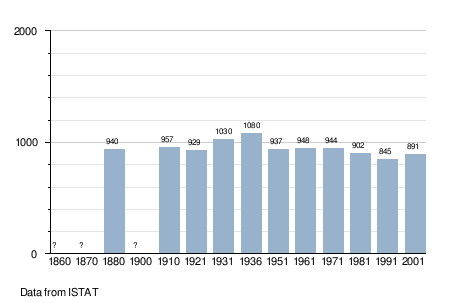Martell, South Tyrol
| Martell | |
|---|---|
| — Comune — | |
| Gemeinde Martell Comune di Martello |
|
|
Martell
|
|
| Coordinates: | |
| Country | Italy |
| Region | Trentino-Alto Adige/Südtirol |
| Province | South Tyrol (BZ) |
| Frazioni | Ennetal (Val d'Enne), Ennewasser (Transacqua), Gand (Ganda), Meiern, Sonnenberg (Montesole) |
| Government | |
| • Mayor | Georg Altstätter |
| Area | |
| • Total | 143.7 km2 (55.5 sq mi) |
| Elevation | 1,312 m (4,304 ft) |
| Population (Nov. 2010) | |
| • Total | 884 |
| • Density | 6.2/km2 (15.9/sq mi) |
| Demonym | German: Marteller Italian: martellesi |
| Time zone | CET (UTC+1) |
| • Summer (DST) | CEST (UTC+2) |
| Postal code | 39020 |
| Dialing code | 0473 |
| Website | Official website |
Martell (Italian: Martello) is a valley and comune (municipality) in South Tyrol in the Italian region Trentino-Alto Adige/Südtirol. It is located in the Martell Valley of the 28,5 km long river Plima, about 60 km northwest of Trento and about 45 km west of Bolzano (Bozen). The commune reaches from an elevation of 957m up to the 3757m of the Zufallspitze (Italian: Monte Cevedale) which towers over the southeastern end of the valley.
Contents |
Geography
As of 30 November 2010, it had a population of 884 and an area of 143.7 km².[1]
Apart from the main village of Gand (Ganda), the municipality of Martell contains the frazioni (subdivisions, mainly villages and hamlets) of Ennetal (Val d'Enne), Ennewasser (Transacqua), Gand (Ganda), Meiern, and Sonnenberg (Montesole), as well as several farms and hotels.
Martell borders mainly to the municipality of Latsch at the bottom of the valley. Other neighbors based in the Vinschgau of the Adige are Stilfs, Laas and Schlanders. Ulten is in the neighboring valley to the East, while Peio, Rabbi and Valfurva are to the south.
History
Coat-of-arms
The emblem shows two-headed sable eagle, with an or halo, placed on argent mountain and azure background. The two colors means that the municipality reaches a high altitude, up to the glaciers. According to legend, the right to adorn the city arms with the imperial eagle was recognized for the courage showed, from the residents, in the Battle of Schanzen nearby Colorano. The emblem was adopted in 1969.[2]
Society
Linguistic distribution
According to the 2001 census, 99.30% of the population speak German and 0.70% Italian as first language.[3]
Demographic evolution

References
- ^ All demographics and other statistics: Italian statistical institute Istat.
- ^ Heraldry of the world: Martell
- ^ Oscar Benvenuto (ed.): "South Tyrol in Figures 2008", Provincial Statistics Institute of the Autonomous Province of South Tyrol, Bozen/Bolzano 2007, p. 17, table 10
External links
- (German) (Italian) Homepage of the municipality